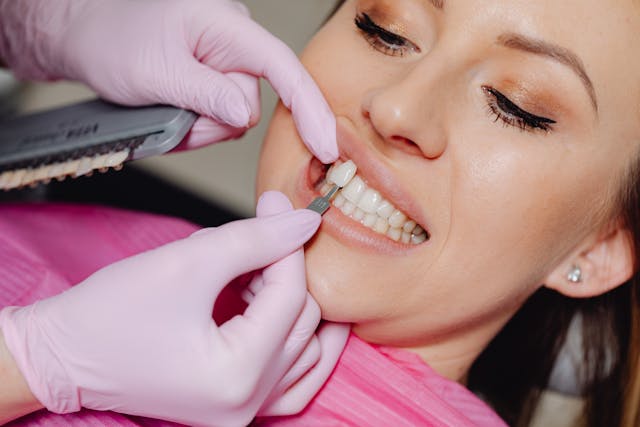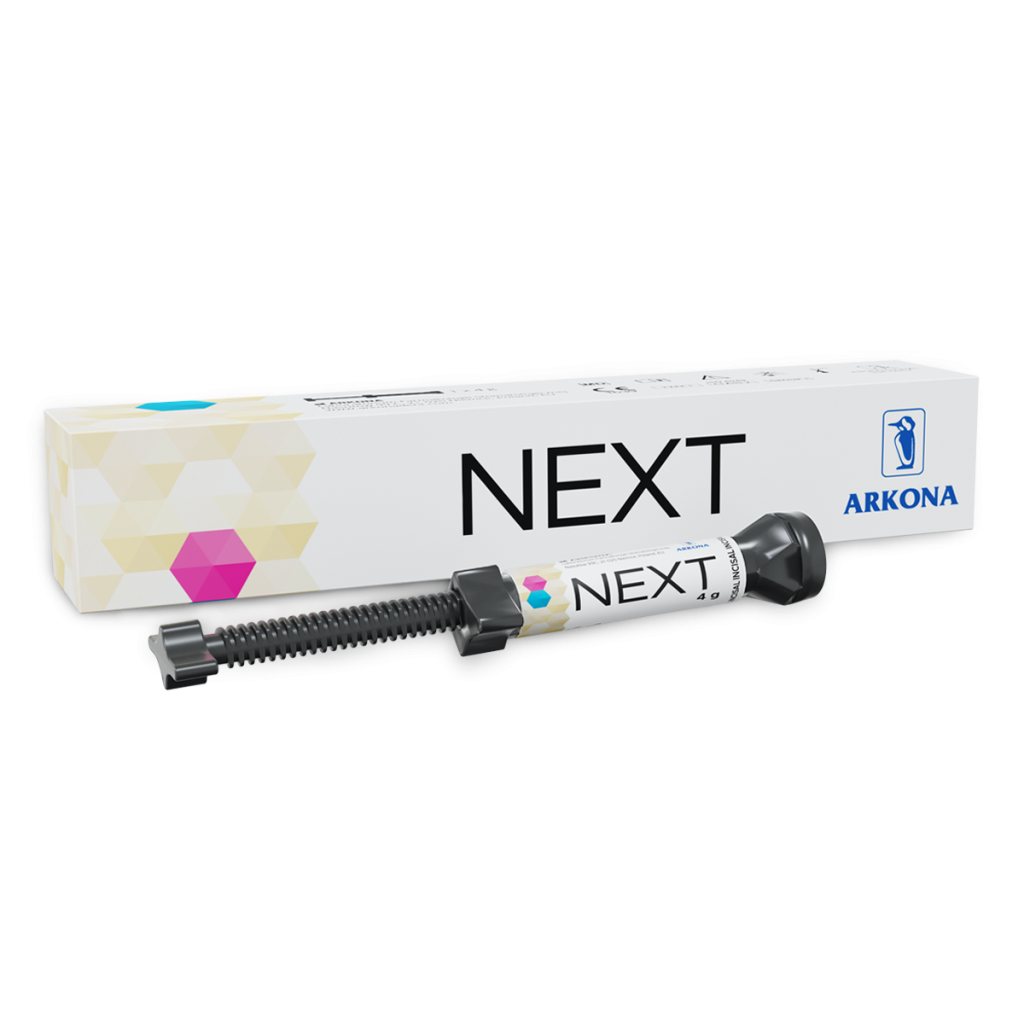Modern restorative dentistry has significantly expanded the possibilities of treating cavities, offering patients aesthetic, durable, and safe solutions.
But how can you ensure that a restoration not only fulfills its protective function but also blends seamlessly with the natural dentition?
What factors guarantee long-lasting results?
One of the most popular materials chosen by dentists today is the composite resin, used to rebuild tooth tissue lost due to caries or trauma. Let’s explore what determines the success of treatment – from both the dentist’s and the patient’s perspectives.
What Defines Modern Composite Restorations?
A modern composite filling is durable, wear-resistant, and perfectly integrated with the natural structure of the tooth.
Treatment using composite materials not only restores the patient’s bite functionality but also ensures an attractive smile.
Composite resins are pliable and easy to shape, adapting to the contour of the tooth before being hardened by blue light – a process known as light-curing.
Unlike older amalgam fillings, composites can be matched to the natural color of the teeth, while their flexible structure allows layer-by-layer application, ensuring each layer adheres perfectly. It’s essential to prepare the surface with an etching gel and bonding system, which strengthens the connection between the tooth and the material.

For patients, comfort during treatment also matters. Composite fillings can be placed under local anesthesia and require minimal removal of healthy tissue, unlike traditional amalgams. They are also more aesthetic and long-lasting, making composites the new standard in modern dentistry.
Key Factors Affecting the Longevity of Composite Fillings
Although light-cured composites are the gold standard in restorative dentistry, their longevity depends on more than just the material itself.
The dentist’s technique, the quality of adhesion, and the patient’s oral hygiene play crucial roles.
- Modern composites are made of organic resin and inorganic fillers, often glass particles, which provide strength and resistance to chewing forces while maintaining a natural color. This makes composite restorations virtually invisible in the mouth.
- Precise application is critical. The dentist first removes decayed tissue, then conditions the surface using an adhesive system (bonding). Next, several thin layers of composite are applied and polymerized with a curing light — ensuring tight sealing and excellent adhesion.
- Longevity also depends on individual patient factors such as bruxism, clenching, or plaque buildup. For larger cavities, the dentist must accurately restore occlusal contacts and tooth anatomy to maintain function.
- If applied correctly and properly cured, a composite filling can last many years — even over a decade, provided the patient maintains proper hygiene and regular check-ups.
Aesthetics of Composite Restorations – Achieving a Natural Effect
Modern composites not only repair damaged teeth but also recreate their natural beauty.
To achieve an invisible result, several aspects must be considered.
- The material should match not only the color but also the translucency and saturation of the natural tooth. Using composites available in multiple shades or mixable tones allows for more precise results.
- Proper anatomical modeling of ridges and fissures ensures that light reflects naturally, creating depth and realism.
- Finally, polishing the surface improves gloss, prevents staining, and reduces plaque accumulation.
NEXT – A Universal Composite for Durable and Aesthetic Restorations
NEXT has been designed for daily clinical use – ideal for both minor cavities and extensive restorations.
It is easy to sculpt, flows smoothly, and provides a naturally glossy finish without the need for additional polishing.
This makes the workflow faster and the results more predictable.

The ergonomic syringe allows for one-handed operation – opening, dispensing, and closing – without interrupting the treatment rhythm.
NEXT is also available in special colors – Pink and Blue – that enhance visibility, improve layer control, and support advanced procedures.
It can be used for Class I–V restorations (Black classification), Splinting, Repairing composite or acrylic prosthetic work.
NEXT ensures excellent adaptation to tooth surfaces, a natural look, and durability that patients can rel
